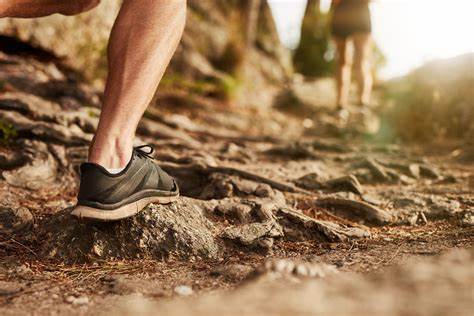Are you looking for some adventure? Or are you just looking to add a new element to your exercise routine? Trail running may just be the thing for you! Not only does trail running offer a magnificent escape into nature, but the diverse terrain challenges your mind and body.
Before you take to the trails, it is vital that you have the right gear to ensure your safety. From the right footwear to proper layering, having the right gear makes all the difference.
Below, we take a look at some top clothing and gear tips for trail running beginners.
5 Trail Running Must Haves for Beginners
- Breathable and moisture-wicking clothing: When choosing clothing for trail running, select fabrics that are made to wick sweat away from your body and skin. This keeps you dry and comfortable throughout your running adventure. Synthetic materials including nylon, polyester and spandex are ideal because they dry quickly, provide ventilation and are lightweight against your body. Try to avoid cotton fabrics as this material absorbs moisture which can lead to blisters and further discomfort on the trail.
- Layer for the weather and elements: Layering is an important part of the trail running experience as the weather on these trails can be unpredictable. With this in mind, you need to be prepared for any change in temperature. Begin with a lightweight, moisture-wicking base layer that sits close to your body. This regulates your temperature. Go ahead and add a lightweight wind-resistant jacket that is easily packed away into your backpack if you get warmer as the day goes on. Also choose outer layers like wind-resistant and water-repellent jackets that protect you from the elements. Bring a pair of gloves and a headband or even a hat in colder temperatures to ensure your safety and warmth.
- Compression leggings or shorts:These are designed to fully support your muscles during a long trail run. They also help reduce possible pain and reduce muscle fatigue which is common on the trail – especially for beginners. Compression shorts or leggings also prevent chafing and provide warmth in cooler weather. It is important your compression clothing isn’t too tight – comfort is key.
- Sunglasses and head gear: When taking to the trail it is important you protect your eyes and head. Get yourself a visor or bandana. These can protect your head and face from the sun, absorb sweat and keep strands of hair out of your eyes. Sunglasses designed for running will also protect your eyes from the sun’s rays and glare, keeping your eyes clear and your trail safer.
- Trail running shoes: Finding the right trail running footwearis essential. Find shoes specifically designed for trail running purposes. These trainers should have aggressive outsoles, rugged uppers and offer additional protection to keep your feet stable and cushioned on rougher terrain. When it comes to choosing the right trail running shoes, remember that the most important feature is the traction of the shoe – this sits on the outsole. Find shoes with multi-directional lugs that can effortlessly grip uneven surfaces, mud and rocks. The upper of your shoe should also be breathable and durable. Make sure your trail running shoe fits correctly and is comfortable – shoes that don’t fit correctly can lead to injury.
In Summary
Finding the right gear and clothing for trail running is vital to ensuring an enjoyable, comfortable and safe experience on rough terrain. Select clothing that is breathable, later and wear the correct shoes – and you are well on your way to trail running success.






























